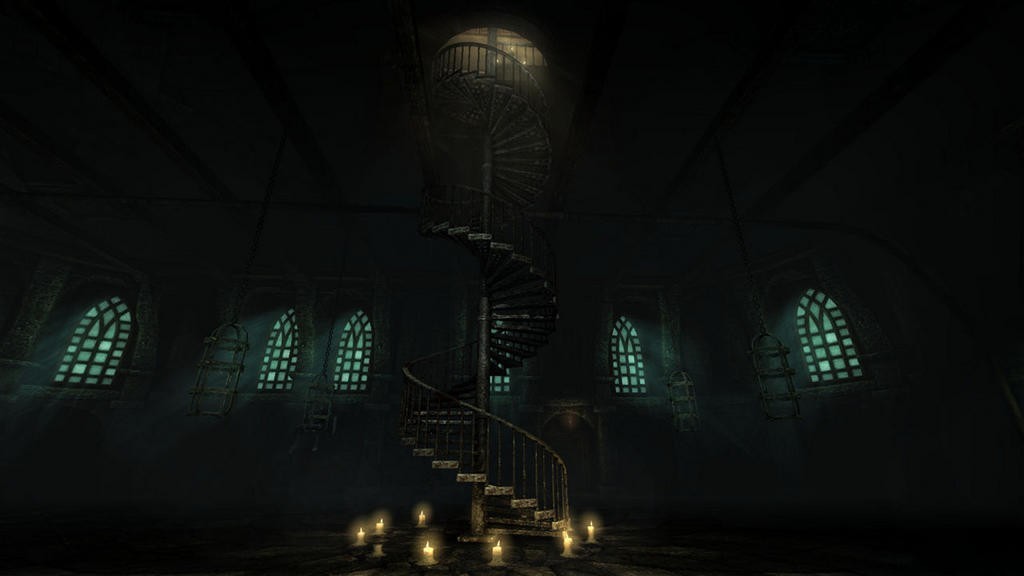Amnesia: The Dark Descent is a game that I couldn’t forget about long after finishing. Frictional Games has developed a first-person survival-horror game that will horrify gamers worldwide. I’m not normally a PC gamer - in fact, the only thing scarier than Amnesia may be my lack of coordination with a mouse and keyboard. Frictional Games has proved me so, so wrong. My ability to use a mouse soon became the least of my worries.
Going into Amnesia with headphones on and the lights off, I had almost no expectations other than the fact that I should have probably put newspaper down on the carpet before I started. When I saw through the eyes of Daniel - Amnesia’s English protagonist - for the first time, my mind was similar to his: a clean slate. You see, he’s suffering from a little amnesia.
When you first find a note saying that you chose to forget, and that someone named ‘Alexander’ is meant to die, it feels more than a little overwhelming. Worse than that, though, is the sense of foreboding that Frictional Games instils during these very first moments of the game using five simple words: “A shadow is following you”.
As it happens, shadows are everywhere in Amnesia. Darkness is a crucial part of the game’s aesthetic, and even more crucial to its gameplay. When Daniel stays in the dark too long, his sanity begins to unravel until he eventually becomes a quivering mess on the cold stone floors of the castle - leaving him completely vulnerable to whatever else lurks inside the halls. Your insanity is conveyed as a blue tint that seeps into the screen. As Daniel begins to hyperventilate, the world wobbles as though it’s made of homicidal jelly. All the while, a scratching sound niggles at the back of your mind, like a praying mantis rubbing its pincers together.
On the plus side, madness does work as a kind of night-vision, allowing you to see just slightly further into the darkness in front of you. Who would have guessed?
To prevent insanity from taking hold there are two solutions. Though they sound simple on paper, in practice achieving them is easier said than done.
The first, relating to the aforementioned shadows, is to chase away the darkness with light; whether by lighting torches and candles with tinder boxes found around the castle, or holding a lantern out with one shaking hand, knowing that the oil inside is running low. Oil can be found throughout the environment, but there never seems to be enough to keep the shadows away for long.
The second is solving puzzles. These come in all shapes and sizes, but normally involve finding a problem – such as a machine that isn’t working or sinewy goo blocking your path - and collecting the right parts or ingredients to fix said problem. While these puzzles give a perfect excuse to explore the variety of areas across the castle, from grand halls to dank prisons and torture chambers, finding the solution also bathes the screen in a calming blue light, which represents Daniel’s return to complete sanity. This, combined with the feeling of progression, is a massive motivator to continue playing, despite the continuous stress on your heart.
Aiding in the destruction of your cardiovascular system is Amnesia’s soundtrack, which really is second to none - if you can take a few stereotypical British accents in your stride.
In any good horror game, sound is quite often one of the most important aspects of creating completely immersive tension and fear. Not only does it add to the scares that you can see, with rising orchestral notes (and whimpering), but it also needs to place you in constant fear of what you can’t see. Amnesia does this excellently with gusts of wind, creaking doors, rattling chains, and nearby howls of pain.
Was that the creak of the door behind me, or is something else in the room? This is the kind of question you’ll be dreading the answer to all the way through Amnesia.
While Amnesia may not be the most visually impressive game by today’s standards, it certainly doesn’t suffer for it. Since a lot of the game is set in the dark, it’s aged pretty well - you can’t judge what you can’t see, after all. Following on from that train of thought, you’ll witness more than a few corridors in a blur of panic as a creature races after you, so the visuals really aren’t going to change the amount of times you regret your choice to begin this horrific adventure.
Whether hiding in the shadows, running from beasts or invisible water creatures (you’ll know what I mean when you get to it, and then you’ll never want to get in the water again), you never gain any sense of security. Through any door, or around any corner, a monster may be lurking; all you can do is hide, run in fear, or - my personal favorite - slowly back up the way you came. This vulnerability, combined with a reactive soundtrack and an intriguing – read: disturbing - narrative means that Amnesia: The Dark Descent is firmly cements itself in the horror genre’s hall of fame. However, out of concern for my own sanity, it’s not a hall that I’ll be walking down again anytime soon.
What Frictional Games has created with Amnesia: The Dark Descent is, essentially, a horror masterpiece. Unlike the majority of horror games, which attempt you make you feel “helpless” whilst you’re holding more than enough weapons to start World War 3, you feel genuinely vulnerable from the first door blown open to the closing credits. This sense of vulnerability is crucial to the game’s success.



Pingback: SOMA Release Date Announced | Continue Play()